Since January 2021 SAM has been designed and built by a dedicated, talented team of volunteers and staff who have lived and worked together at Biosphere 2, from a few days to a year or more at a time. It is their tireless dedication to quality fabrication that has made SAM possible with a limited budget and demanding time frame.
Core Team, on-site at SAM
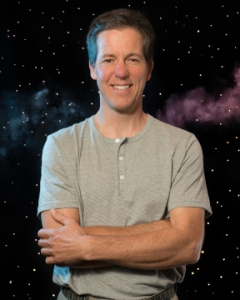
Kai Staats, MSc, Director of Research for SAM at Biosphere 2 and Project Lead
Kai Staats is a veteran developer of platforms for research and science education. He was co-founder and CEO of the world-renowned Yellow Dog Linux operating system used extensively in Department of Energy, NASA, and University research across a full spectrum of desktop and supercomputer applications. Kai wrote the machine learning algorithm Karoo GP used at LIGO for instrument characterization and synthetic supernovae detection; and was principal designer of the Mt. Meru Astronomical Observatory in Tanzania, the first of its kind in East Africa. At Arizona State University Kai led the development of SIMOC, a research-grade computer simulation and educational interface to a Mars habitat, hosted by National Geographic for citizen scientists everywhere. Now, Kai and his team have constructed SAM, a hi-fidelity, hermetically sealed and pressurized Mars habitat analog with greenhouse, living quarters, airlock, pressure suits, and geologically accurate indoor Mars yard located at the iconic University of Arizona Biosphere 2.
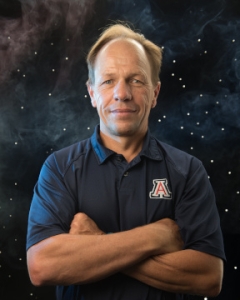
John Adams, Deputy Director and COO at Biosphere 2
For three decades, John Adams has helped drive the evolution of Biosphere 2 through positions of progressive responsibility and oversight. After receiving his BS in Wildlife and Fishery Science at the University of Arizona in 1995, and working on various biology research initiatives in Southern Arizona, Adams became Senior Research Specialist at Biosphere 2, leading the research that explored the effect of elevated CO2 on the complex mesocosms. Building on his deep knowledge of the facility and its science, Adams became Biosphere 2’s Media Coordinator and Spokesperson at Columbia University in 1999, fielding inquiries from around the world, building public understanding of Biosphere 2’s groundbreaking Earth systems research, and developing its K-12 education programs. In 2014 Adams advanced to his current leadership role of Deputy Director, returning to his roots as a key member of the team that directs all research and related activities inside Biosphere 2 and the surrounding campus.

Luna Powell, Site Manager and Hydroponics Co-Lead
Luna has been a part of the SAM core team since early 2022. She has grown to become a staple part of the construction, design, outreach, and chaos management of everyday life at SAM. From training an incoming team to designing and building full hydroponics systems, Luna has a hand in it all. While she loves every aspect of her job, the highlight of Luna’s day is watching the incredible diversity of wildlife around Biosphere 2 campus. She makes sure everyone on the team is well versed in Sonoran Desert knowledge and always comes to work with a new fact to share. When she’s not at SAM, Luna is studying at the University of Arizona School of Natural Resources and the Environment for her undergraduate degree in Wildlife Management with the goal of becoming a wildlife biologist.
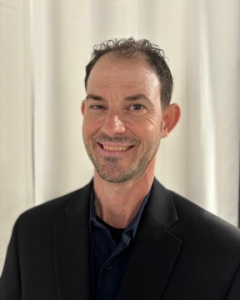
Matthias Beach, Master Builder
Matthias Beach, born on D.M. AFB in Tucson AZ, comes to SAM with a wealth of trade knowledge and determination to get things done. He has proudly served his country and as an honorably discharged Air Force Space Command Veteran he brings the discipline to complete projects in the heat of Arizona sun. Matthias’ more proud moment at SAM, to date, came when seeing the foam blocks attached to the support walls he and his co-worker Luna installed over two weeks, then witness the Mars Yard take form, complete with a lava tube of his own fabrication. With many more projects to complete, Matthias will continue to improve his skills and that of others as he forges forward, building and improving this amazing scientific facility!
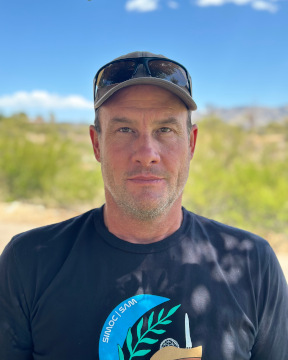
Nathan Schmit, Master Builder
Nathan is a former US Marine, inventor, innovator, fabricator, heavy equipment operator, mechanic, welder, sport tinkerer, thinker, gardener, speed wing flier, and all-around motivator to get sh!$ done. Rejoining the team in January 2025 Nathan has lead construction of the new IT room and CO2 scrubber research center, applying the art of on-site, hand-drawn sketches to manufacturing jigs for repeat precision and rapid construction.

Bindhu Oommen, MD, MPH, MedBay Lead at SAM
A practicing, board-certified general surgeon and lover of Earth and space, Bindhu’s experience at SAM began as a volunteer in the winter of ’22, helping with various construction tasks (painting, cleaning, sanding) while SAM was nearing the end of its habitat construction phase. As part of SAM’s working group, she moved to capture operational knowledge and wrote the Standard Operating Procedures for SAM analog crews. Bindhu served as proud crew commander for the second analog mission (Inclusion 2) in May 2023. She continues to aid the research endeavors at SAM with writing and publication, research for IRBs, and leading the Space Surgery Working group to develop a research-grade medical and surgical bay at SAM that will aid future exploration missions and have terrestrial applications.
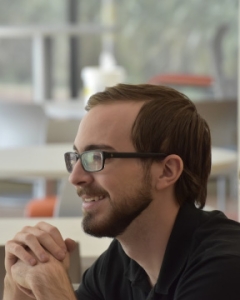
Griffin Hentzen, CO2 Scrubber Research Facility Lead
Griffin joined SAM in January 2025 as a designer-fabricator at SAM with a focus on designing, building, and testing the facility’s new experimental CO2 scrubber in the new Experimental Air Revitalization Laboratory (EARL), a physical building co-designed by Griffin. Griffin has a Bachelor’s in Mechanical Engineering from Purdue University where he was active with Students for the Exploration and Development of Space (SEDS). He has worked at Sierra Space on their Environmental Control and Life Support Systems (ECLSS) and VR-35K upper-stage rocket engine. Griffin has long been an avid fan of all things space related, and is excited to join the SAM team!
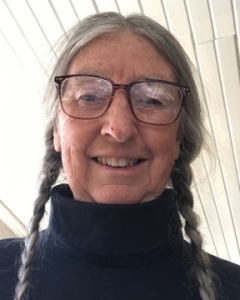
Linda Leigh, PhD, Plant Well Being Advisor
From the tundra of Alaska to the jungles of Venezuela, Linda Leigh has canvassed the spectrum of Earth’s biosphere. She conducted field studies in the restoration of tall grass prairies in Ohio; feasibility of re-introduction of the grey wolf to Western Washington State; and a botanical study of the Alaska Peninsula. In 1989 Linda began pioneering work in materially closed ecosystems, living for 21 days in the 400 sq-ft Biosphere 2 Test Module. Linda directed the collection and propagation of over 2,000 candidate plant species for the rainforest, savannah, and desert biomes for Biosphere 2. She was subsequently a member of the eight person team sealed inside of Biosphere 2 for two years. Linda is now co-founder and Compost Curator of the Oracle Community Learning Garden, and advisor to the SAM hydroponics team. Linda holds a BSc in Botany and Field Ecology from The Evergreen State College in Washington State, and a PhD in Systems Ecology and Energy Analysis from the University of Florida.
Students and Interns

Atila Meszaros, UA Graduate Student in Biosystems Engineering, and Hydroponics Co-Lead
Atila holds a BSc in Biology from the University of Peru, Lima, with extensive field biology research with extremophile organisms and their biomarkers, working to understand how to find life beyond Earth. Atila is currently earning his masters degree in Biosystems Engineering degree at the University of Arizona, focused on modern food production in controlled environments for both commercial use and in human space exploration. He is the leading researcher at SAM, guiding a one year endeavor in human-in-the-loop bioregeneration. Atila is involved in outreach with Latin America communities, is a National Points of Contact in Peru for the Space Generation Advisory Council, and has completed several space analog missions at the Inflatable Lunar-Mars Analog Habitat, University of North Dakota, and at the Mars Desert Research Station (MDRS), Utah.

Tasha Coelho, ASU Undergraduate Student in Planetary Biology
Tasha is a student data analyst for the Mastcam and Mastcam-Z instruments on NASA’s Curiosity and Perseverance rovers, as part of the Jim Bell Research Group at Arizona State University’s School of Earth and Space Exploration. Tasha has worked with the SAM team since early 2023, assisting the habitat construction team. She was instrumental in the design of the geologically accurate Mars yard at SAM, working with UA Planetary Geologist Dr. Christopher Hamilton. Tasha presented a poster on SAM at the Lunar and Planetary Science Conference 2025 and is developing an educational guide to the Mars yard for secondary school students.
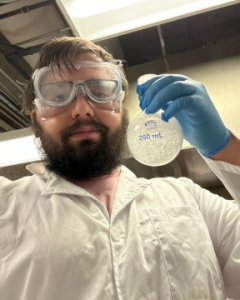
Carter Hollings, UA Undergraduate Student
Carter is an undergraduate researcher at the University of Arizona, double-majoring in CBC (Chemistry and Biochemistry) and MCB (Molecular and Cellular Biology). He works under Dr. Pierre Haenecour for the Lunar and Planetary Laboratory where he chemically analyzed structures on CI chondrites using scanning electron microscopy, relating them to particulates recovered from Asteroid (101955) Bennu. Carter conducts research at SAM where he is writing his undergraduate thesis on the microbiota change within an enclosed space colony-like environment. Carter grew up in Tucson Arizona as the son of a pharmaceutical oncologist. Carter intends to study internationally and honing his understanding of everything between the telescope and the microscope.
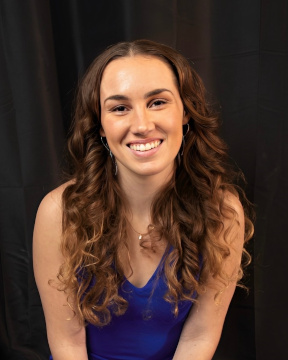
Madelyn MacRobbie, Ph.D. candidate at MIT and Harvard Medical School
Madelyn (Hoying) MacRobbie is a Ph.D. candidate in the joint MIT and Harvard Medical School Medical Engineering and Medical Physics program, with a focus on bioastronautics. Her Ph.D. research in the Tearney Lab at Massachusetts General Hospital investigates aerospace physiology leading to novel medical devices for long-duration spaceflight. She recently earned an M.S. in AeroAstro at MIT, where she investigated the influence of mission architecture on crew dynamics in surface exploration missions through a series of analog missions. MacRobbie graduated from Duquesne University with a B.S. in Biomedical Engineering and a B.A. in Physics. At SAM, MacRobbie works with the Space Surgery Working group to research and develop medical systems for space exploration. She is an NSF Graduate Research Fellow, a Zonta International Amelia Earhart Fellow, and has been named an Emerging Space Leader by the International Astronautical Federation.
Integral Team Members
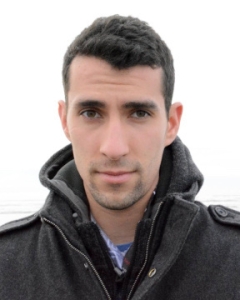
Trent Tresch, Director of CHaSE
Trent Tresch works to bridge the gap between traditional aerospace and new-space innovation. At ASET Dive into Space Trent developed underwater Neutral Buoyancy education programs. At Smith Aerospace Garments he worked on in-depth commercial astronautics trainings and began to build the next generation of accessible pressure suits and life support systems, followed by high altitude, manned balloon flight tests. He has published in Purdue’s Human Performance in Extreme Environments journal and presented on numerous occasions regarding low-cost life support systems for training and exploration. At the University of Arizona Biosphere 2, Trent directs the Center for Human Space Exploration (CHaSE), bringing real-world experience with pressure suits, emergency water egress, pressure chambers, and understanding of the challenges and rewards of near-future human space exploration to avid learners, at a very reasonable cost.
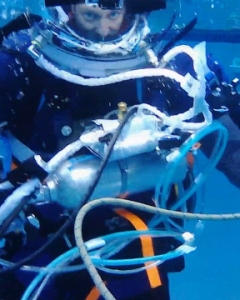
Cameron Smith, PhD, Professor at Portland State; Founder Smith Aerospace Garments
Cameron Smith teaches human evolution and adaptation at Portland State University, Department of Anthropology, is the co-Director of the Center for Human Space Exploration (CHaSE), and founder of Smith Aerospace Garments. Since 2010 he has been designing, building and testing a variety of pressurized garments, including for high-altitude flight and training for extra-vehicular activities (EVAs). Cameron has published in a variety of journals including Acta Astronautica, the Journal of Human Performance in Extreme Environments, the Journal of the British Interplanetary Society, and Journal of the European Space Agency Advanced Concepts Team. His many books include The Fact of Evolution (Penguin 2006) and Principles of Space Anthropology (Springer 2019). Cameron is currently developing a Mars Surface Exploration System, including a space-suit exoskeleton and a pressurized survival tent.

Bryan Versteeg, Space Architect and Virtual 3D Designer
Bryan is a conceptual designer specializing in space exploration, habitats, and the infrastructure necessary to support humans away from Earth. He has been involved in the design visualization industry for nearly 30 years, collaborating with numerous private space companies, documentaries, and various publications worldwide. He designed the habitats for Mars One and has played a vital role in the design of the core habitat modules for the research-grade computer model SIMOC. At SAM Bryan was instrumental in assisting with early design and visualization during the first rounds of fund raising, and then assisted with 3D visualization of the Mars yard prior to sculpting. He is now working on an integrated 3D virtual experience of SAM. His portfolio can be enjoyed at SpaceHabs.com
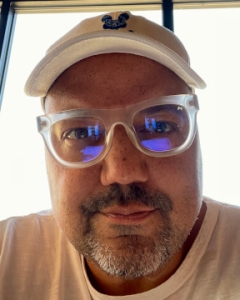
Jason Francois, Architect and Industrial Designer
Jason has spent his life in pursuit of creative adventures through his work, which have led him through the worlds of filmmaking, architectural and industrial design, and children’s book illustration. Through each endeavor his curiosity has lead to broader pursuits as he continues to look for more challenges and adventure on Earth, while keep an eye towards the sky and beyond.
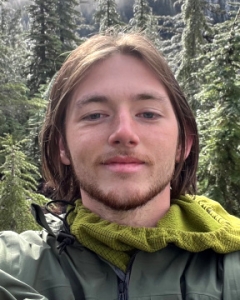
Kai Nevers, Industrial Designer
Kai is a recent graduate of the Oregon State University Outdoor Products degree specializing in softgoods development. Founder of WanderHut Vehicle Equipment, Kai is an entrepreneur and designer focused on simple functionality applied to tents and camping equipment. With a passion for human space exploration, he joined the SAM team in the fall of 2024 to work on the pressurized Mars tent with Dr. Cameron Smith. Kai is now engaged in designing and fabricating the next generation of pressure suits for SAM, with a built-in harness for rapid attachment to the reduced gravity simulator.
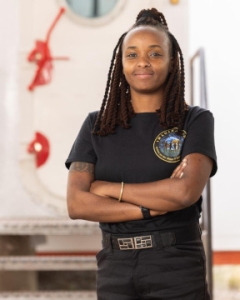
Ivy Wahome, MFA, Textiles Designer
Ivy is a Kenyan-born costume designer, seamstress, and MFA graduate from the University of Arizona (2024), with over a decade of experience in costume design and production for theater and dance. Her work spans productions at the University of Arizona, Broadway in Tucson (nationally touring Broadway shows), and various community theaters. As the current UA Costume Shop Supervisor for the School of Dance, Ivy brings innovative textile artistry to the stage—incorporating Black and African perspectives and storytelling into her designs. Ivy was a member of Imagination I, a team embedded in SAM for six days during which Ivy contributed functional and decorative materials for their lunar mission at SAM. Ivy works with the SAM team to provide light-blocking covers for nutrient storage tanks at the SAM hydroponics facility, and assisted in the Mars tent prototype process.
Integral Team Members
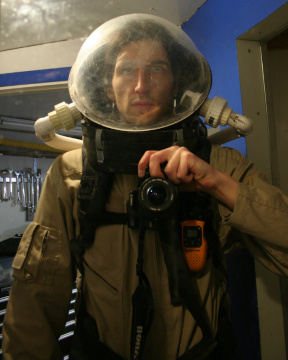
Ezio Melotti, Lead Developer for SIMOC
Ezio is a software engineer, instructor, and innovator, with almost 20 years of experience in software development and programming in several languages. Born in Milan, Italy he lived in Turku, Finland where he graduated from Turku University of Applied Sciences, where he instructed Python Programming. He is a CPython Core Developer with more than 1000 changesets contributed. He is the maintainer of the Python bug tracker and the HTML package, and did extensive work on the test suite, documentation, and standard library. Ezio brings to SIMOC a robust set of coding standards, documentation, and user interface aesthetics and functionality. His keen attention to detail is best expressed in his exquisite photography of the natural world.
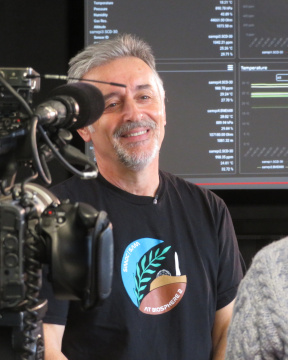
Franco Carbognani, SIMOC Live Developer
For over two decades, Franco Carbognani has driven innovation across scientific computing, system engineering, and research infrastructure. He holds an MSc with a double major in EECS (Information Technology/Hardware Engineering) from the University of Bologna and CEFRIEL Research Center in Milan. With early career roles in software development and electronic design automation, he joined the European Gravitational Observatory (EGO), where he has played a pivotal role in advancing gravitational-wave science and computing systems.
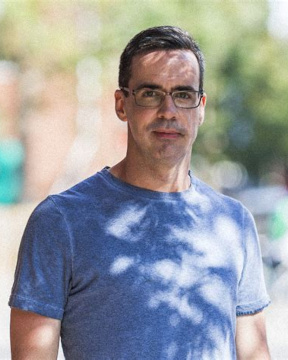
Christopher Murtagh
Chris has established himself as one of the most experienced systems administrators in North America, having provided stable, secure, Linux-based servers for dozens of corporations, from software developer firms to pharmaceuticals. Chris has worked with Kai Staats since the early 2000s, providing stable, secure servers and back-end integration for a wide variety of projects and digital adventures. Now, Chris maintains the light travel-time delay email server for visiting crew to SAM, the sealed habitat analog located at the University of Arizona, Biosphere 2, and provides continued support for website and email server and systems integration.
Prior Team Members
Staff and Volunteers
(alphabetical order, 2021-recent past) Colleen Cooley, Robert David, Angus G., Sean Gellenbeck, PhD., Grant Hawkins, Trenton Kenney, Natasha Loving, Amin Mody, Natasha Nichols, Mason Robbins, Greg Ross, KC Shasteen, Anastasia Stepanova, Rob Ronci and Jolene Varga, John Zelenky; Aaron, John, Tim, Terry, and the Biosphere 2 staff.
UA Engineering 498, 2020-21
University of Arizona Engineering 498 Capstone team members designed and built a working, scaled prototype of an Automated Pressure Regulation System for SAM. A full-scale system will be built on the foundation of their design to work in conjunction with the Test Module’s lung. Students: Ahmed Alraeesi, James Marlar, Meghan Marlowe, Nathan Moeller, Coby Scheidemantel, Gustavo Velez, Arfan Wibisono
UA Engineering 498, 2021-22
University of Arizona Engineering 498 Capstone team members are designing and building a working, scaled prototype of a solid-state, swing bed CO2 scrubber. This Mars X-Hab project is funded by NASA, and guided by experts at NASA in CO2 scrubbing research and applications. Students: Brianna Otero, Grace Halferty, Joaquin Pesqueira, Kenneth Werrell, William Fowler

